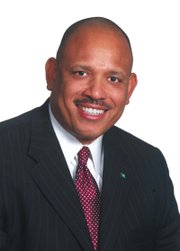By NATARIO McKENZIE
Tribune Business Reporter
nmckenzie@tribunemedia.net
A FORMER Bahamas Mortgage Corporation chairman yesterday blasted the Mortgage Relief Plan as “pure public relations” and “bogus from the beginning”, after the Government admitted that the plan had yet to benefit any distressed homeowners.
“It was never intended to be possible to implement this plan,” Dr Duane Sands, the former FNM Seantor, said. “This was pure public relations.
“They need to stop playing politics and get on with the business of running the country. We thought this plan was bogus from the beginning and we can see now that no one was helped. It helped them get elected. A lot of people hoped this was real.”
While refusing to call the Mortgage Relief Plan a failure, Michael Halkitis, minister of state for finance, recently admitted that the Government would have to go back to the drawing board, as even those who had qualified under the plan faced financial challenges in meeting payment terms under the rewritten loan.
When the plan was introduced last September there were reportedly around 4,000 homeowners in arrears. The Government had allocated $10 million to the plan, which was a key campaign promise listed in its Charter of Governance, but Tribune Business reported last year that the Ministry of Finance had yet to inform the banking community on how it could access those funds.
“If we are going to spend the money, it ought to be of some benefit to the Bahamian people,” Dr Sands said.
“They need to stop wasting time and hard-earned money, and cut back on spending funds that have very little long-term benefit to the people. Perhaps we can assist institutions that have made a difference and begin a real conversation about low-cost housing and alternative building techniques to bring down the cost of housing.”
Under the terms of the Mortgage Relief Plan introduced in Parliament, the lender reviews each applying borrower’s financial circumstances and determines what they can afford to service, inclusive of principal, interest, property insurance and real property taxes, given their reduced income.
The difference between the total mortgage debt outstanding, inclusive of accrued interest, at the time of application, and the mortgage amount the lender determines the borrower can afford to service with his/her reduced income, is defined as the ‘Gap’.
All eligible borrowers whose gap did not exceed $22,500 qualified for participation in the initial version of the plan. Eligible borrowers, whose gap exceeds $22,500, may qualify for consideration and participation in the plan at the sole discretion of the relevant lender.
Of that $22,500, the Government proposed to kick in a maximum of $7,500, or one-third. If the Gap exceeded $22,500, an otherwise eligible borrower would have the opportunity to pay the amount of the excess (above $22,500) from other un-borrowed sources before being allowed participation in the plan.





Comments
Use the comment form below to begin a discussion about this content.
Sign in to comment
Or login with:
OpenID